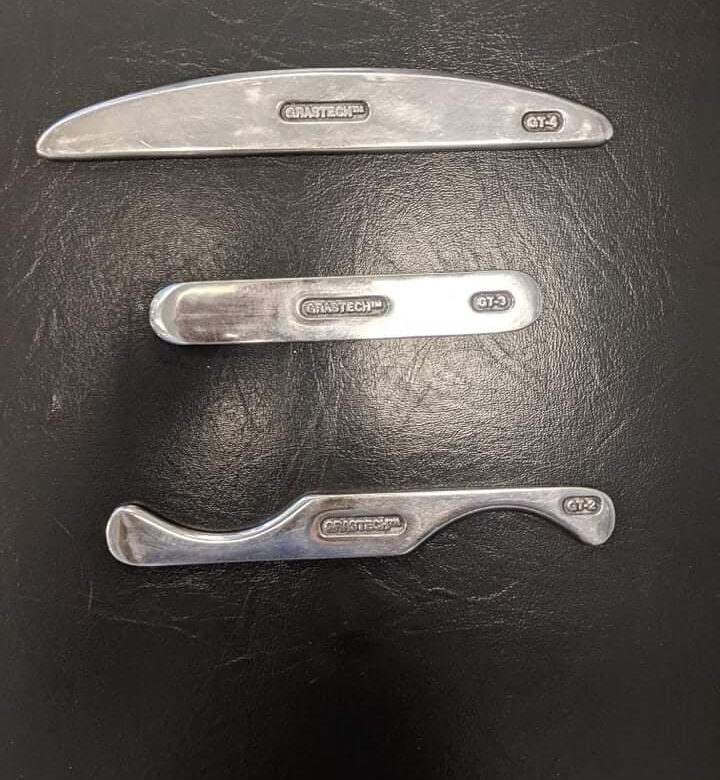Low back pain is one of the most common and debilitating concerns for individuals pursuing physical therapy. Deya et al., 2006, performed a survey of 31,044 respondents, and of that large pool of subjects, 26.4% reported significant incidences of low back pain in the last three months. Unfortunately, it is incredibly apparent with a large study that many people are left searching for anything that can help manage their pain. This blog will discuss how treating back pain with Graston technique is another option.
Many of these individuals have found relief with the Graston technique. A method of instrument-assisted soft tissue mobilization. With this technique, the clinician utilizes specialized metal tools to treat various myofascial dysfunctions.
How can the Graston technique improve your therapy experience?
One benefit of this treatment vs. other methods of manual therapy is that the instrument provides increased tactile feedback to the clinician to better help them diagnose and treat myofascial dysfunction. Similar to how a stethoscope amplifies a heartbeat, the Graston instruments can help “amplify” myofascial dysfunction for a discerning practitioner. Another benefit of the Graston technique is its ability to amplify the body’s natural healing process.
Loghmani et al., 2016 studied the effect of the Graston technique on the lumbar spine of six young males. After 6 sessions of implementation, they found a three-fold acute increase in mesenchymal stem cells, as well TR-MSCs, an endogenous cell that is critical for vascular repair. The Graston technique also offers the benefit of mechanotransduction, which refers to the process of how cells respond to various external mechanical loads. Mechanotherapy also can influence the growth, remodeling, and repair processes of dysfunctional tissue (Thompson et al., 2016).
How can the Graston technique help my low back pain?
Like all modalities, the implementation of the Graston technique is dependent upon the clinician’s skill, diagnosis, and desired goal. However, it provides your PT with the opportunity to discern myofascial dysfunction to a greater degree, amplify the body’s natural healing process, and allow for greater response on the cellular level through mechanotransduction.
These are only a few of the ways that the Graston Technique can help you with your pain.
Ask your physical therapist if the Graston technique is the appropriate treatment for you. Additionally, we have multiple physical therapists at Freedom Physical Therapy Services who can utilize Graston, alongside a host of other techniques, to help you live with less pain and more freedom. More information can be found here.
References
Deyo RA, Mirza SK, Martin BI. Back Pain Prevalence and Visit Rates: Estimates from U.S. National Surveys, 2002. Spine (Phila Pa 1976). 2006 Nov 1;31(23):2724-7.
Loghmani MT, FUller EM, Handt R, Neff B, Seasly L, Swartz C, Whitted M, March KL, (2016). Instrument-assisted soft tissue mobilization in healthy yound adult males mobilizes tissue-resident mesencymal stem cells into circulation. Journal of orthopaedic & sports physical therapy, 46(1), A107
Thompson WR, Scott A. Loghmani MT, Ward SR, Warden SJ (2016). Understanding Mechanobiology: Physical Therapists as a Force in Mechanotherapy and Musculoskeletal Regenerative Rehabilitation. Physical therapy. 96(4), 560-569

